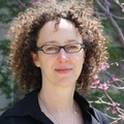Article
A Phenomenology of 'The Other World': On Irigaray's 'To Paint the Invisible'
Chiasmi International: Trilingual Studies Concerning Merleau-Ponty's Thought
(2008)
Abstract
As we know, Merleau-Ponty was struggling with a dynamic shift in his thinking at the premature end of his life. In those last notes he raises the question of how to elaborate a phenomenology of “’the other world’, as the limit of a phenomenology of the imaginary and the ‘hidden’”—a phenomenology that would open onto an invisible life, community, other and culture. In her essay on “Eye and Mind”, “To Paint the Invisible”, Luce Irigaray argues that Merleau-Ponty was not yet ready to address this question, of the limits posed to his vision by the presence of an other. The artworks of abstract expressionist artist Joan Mitchell are considered in the ways that they open up a different time-space suggesting an other world with which we intertwine without appropriation. Her works, I argue, defy reduction to essences, but also do not rely merely on sensation—for this reason they point in the direction of how to think phenomenology anew. For I do think Merleau-Ponty would be open to these conversations, to these other worlds and other visions.
Keywords
- Merleau-Ponty,
- Irigaray,
- Joan Mitchell,
- art,
- painting,
- color,
- Deleuze
Disciplines
Publication Date
2008
Citation Information
Helen A Fielding. "A Phenomenology of 'The Other World': On Irigaray's 'To Paint the Invisible'" Chiasmi International: Trilingual Studies Concerning Merleau-Ponty's Thought Vol. 9 (2008) Available at: http://works.bepress.com/helen_fielding/24/
